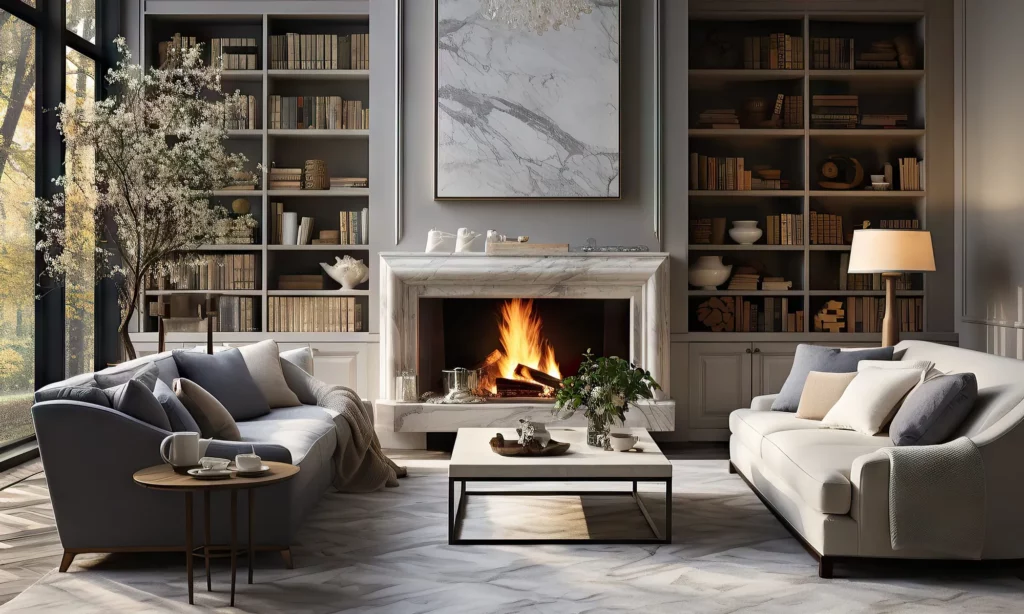
Enjoying the miracles of AI in interior design is altering the way that spaces are imagined and crafted. Professionals have always needed to apply their visions and technical skills to the client’s needs, and now, thanks to AI, this has become much more effective, accurate, and customized.
In essence, AI in interior design technology involves using the help of complex algorithms and ML to study the information, and make forecasts, and design 3D images (and renderings) closely mirroring real life. With this technology, the field is developing, and the designers can take advantage and get to new areas of creativity while perfecting their processes.
AI makes the process better, quicker, and more efficient. Earlier, making detailed designs and layouts took a lot of time and effort, especially if some changes were required.

At present, instead of the 3D computer models taking such a long time, many other tasks like measuring the means, developing approximations of the diagrams, and even temperature layout effects to be employed in designing are computerized by contemporary technologies. It helps to obtain realistic virtual rooms for clients, providing them with the feeling of ready-designed rooms.
Among the great lures of 3D modeling design is the ability to improve the design process. The normal approach to 3D modeling is tedious owing to the fact that it is very detail oriented and manual work is also present in every stage. There comes a point in time in interior design wherein the manual effort is not required because most of these processes are computerized.
For example, simply showing the dimensions of a room to the AI can make it suggest appropriate layouts in seconds, which would take days to manually try out. Since this makes the designers ‘cut corners,’ they are able to deliver more within a unit of time than would have been possible if the normal procedures were followed.
There are also other options on structural changes or the elements of design within the space that the clients may have overlooked that the AI technology will propose.
AI-enhanced 3D modeling has also become famous for its ability to produce captivating animations and thorough presentations. Whereas the use of a traditional 2D sketch has its limitations, 3D modeling software for interior design lets clients visualize how their future homes will look like.
These AI-powered design tools create accurate depictions of lighting, textures, and even how shadows will fall throughout the day and therefore presents captivating experience. Models constructed by AI are also helpful in adopting an easy to remember way of communicating the design ideas to clients hence faster approvals and higher clients’ satisfaction than would otherwise be.
The quest for AI input in interior design consistently prompts the growth of relevant technologies for designers. Several current tools that are transforming design practice are listed below.
AI-enabled 3D modeling is merely an introduction to the future advances in technology within the field of interior design. Since it is so clear that progress will be made concerning further developments and improvement of AI 3D modeling, more features that will enable more realistic virtual environments can and will become available.
In a growing depth of interior design, technology will evolve and transform resting on the artists, like the mind blowing concepts transforming the way these artists interact with their imagination translated to concrete works. Interested? Visit the 3d rendering studio Genense.
comments